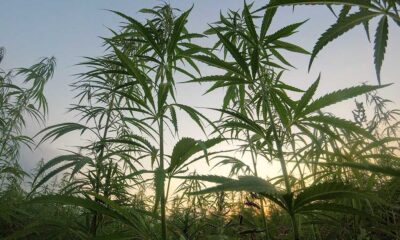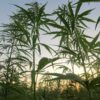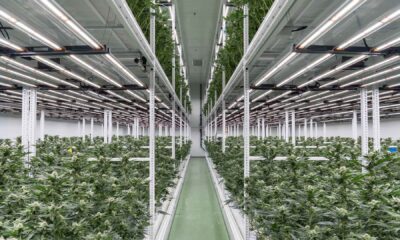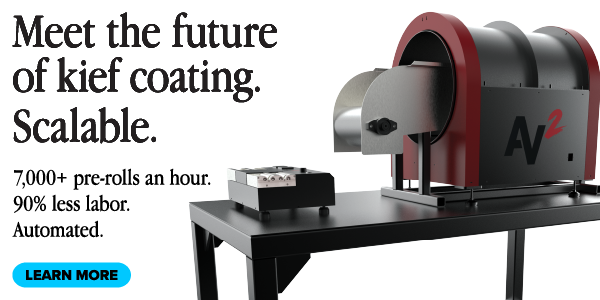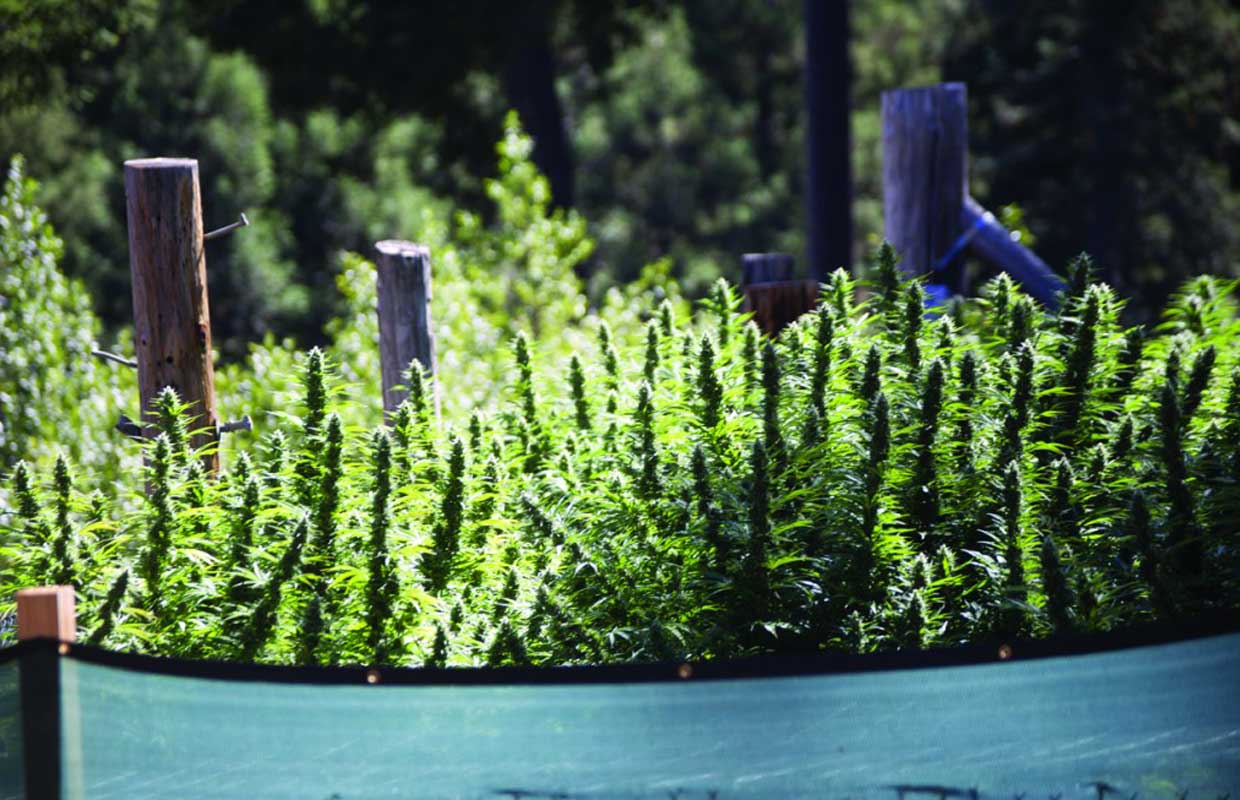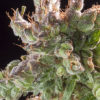
Science
What You Need to Know About Decarboxylation
Removing water molecules in cannabis through decarboxylation activates THC.
Decarboxylation, which is an essential action in enjoying cannabis flowers and edibles, is a process in which carbon dioxide (CO2) leaves a stable molecule and floats off as a gas. Atoms in a molecule can be thought of like billiard balls, with each one having a size, weight, and exact position. As these atoms float away, the substance left behind will become lighter, like a dry towel being lighter than that same towel soaking wet. The idea is that as the CO2 leaves, the weight left behind is reduced.
Decarboxylation typically occurs by heating, but can also be caused by exposure to certain frequencies of light, and certain substances like molecular oxygen in the air.
If the weight of the molecule before and after its decarboxylation is known, then a percent of mass lost in decarboxylation can be calculated. If the CO2 contributes 10 percent of the weight of a molecule, than 90 percent of the mass remains after decarboxylation. This would mean that continuously heating 100 grams of this substance would eventually yield 90 grams of the decarboxylated substance, as the remaining 10 grams represent the weight of CO2 which gassed off.
How Does Decarboxylation Affect Cannabinoids?
Decarboxylation of cannabinoids and cannabis products is very crucial to understanding the power of cannabis as medicine. The cannabis plant only has the ability to produce cannabinoid acids, like THCA, and THC is only created by decarboxylation outside the plant. This decarboxylation is usually done by fire when smoking, or by baking in edibles. Most cannabinoids lose approximately 87.7 percent of their mass upon decarboxylation. This means that if you had 100 grams of crystalline isolate of a cannabinoid acid, such as THCA, after decarboxylation you would have 87.7 grams left of THC.
This is important for people decarboxylating their cannabinoids themselves, such as producers of cannabis-infused edible products and hash oil producer that wish to sell decarboxylated oil. This is also important for advertisers of raw cannabis products such as cured cannabis flower, who must either report the value of the cannabinoid acid directly observed by the testing lab, use the theoretical conversion, or display both.
This labeling issue with raw flower is not as easy as it seems at first glance. Let’s consider a typical example of THC-dominant cannabis. The lab will test the flower and find 26 percent THCA and 3 percent THC. This is because some of the cannabinoid acids produced by the plant are decarboxylated by air and sun before harvesting and curing. The smaller the amount of THC observed directly by the lab typically indicates that the cultivator has submitted fresh cannabis that has been protected from light and exposure. A very high THC content indicates that the cannabis flower is not as fresh and been more exposed.
Now the dispensary has to either advertise two numbers, 26 percent and 3 percent, or advertise one theoretically calculated number, 25.8 percent, or both. Both allow the patient to access the greatest amount of information and be the best informed, while also reducing liability on the cannabis business involved in label making.
Tetrahydrocannabinol (THC) is a well-known cannabinoid for being the primary intoxicant and euphoriant of cannabis. THC is also one of the most practical and safe treatments for neuropathic, chronic, and other types of pain. THC is effective in addressing both the immunological and symptom component of multiple sclerosis (MS).
Despite the fact that THCA is not an intoxicant, it is a powerful medicine. THCA is one of the strongest anti-inflammatory agents in cannabis. Smokers receive very little to none of this cannabinoid, due to its decomposition in the smoking process. THCA is an anti-inflammatory agent, and according to one study, a more powerful neuroprotective agent than THC. THCA is a powerful COX-1 and COX-2 antagonist, similar to aspirin and ibuprofen, but with far less toxicity to the liver.
The effects of THCA and THC reflect the diversity of action on the human body a cannabinoid and its precursor acid can have. The other cannabinoids, CBD, CBG, CBC, and THCV all have acid forms which have distinct effects on human health.
Cannabidiol (CBD) has been shown to be an effective medicine for people suffering from anxiety. What CBD has also been shown to be effective at fighting is breast cancer cells. Many of these studies find that CBD promotes apoptosis, or cell suicide, in breast cancer cells while leaving the healthy cells unaffected.
Cannabidiolic acid (CBDA) is CBD’s acid precursor from raw cannabis flower. CBDA has also been shown to fight human breast cancer, but in a different way. Whereas CBD causes apoptosis in breast cancer cells, CBDA has been shown to slow or stop metastasis of breast cancer cells by arresting their motility, or ability to move throughout the body. This evidence would indicate that a breast cancer patient may want to talk to their doctor about dual CBD/CBDA therapy, taking both decarboxylated CBD and raw CBDA together.
Cannabigerol (CBG) has been shown to have some potent anti-inflammatory properties that are particularly applicable in inflammatory bowel disease (IBS). Additionally, CBG has been shown to have some properties not known among many other cannabinoids, such as an ability to interact with human adrenal receptors and serotonin receptors. Currently, more studies need to be done on cannabigerolic acid (CBGA) in isolation from CBG to get an understanding what, if any, difference there are between the cannabinoid and its precursor acid on human health.
It is important to note that the mass loss is not a conversion rate. Mass loss assumes that all of a substance will decarboxylate and calculates how the mass will change. An accurate answer must account for how much of the cannabinoid will decarboxylate. Studies indicate that 30-70 percent of cannabinoids undergo decarboxylation under standard smoking conditions. This is why our calculations are only a theoretical maximum, and are not a result with the same standing as those directly observed in the plant. This is also why it can be very important to label your theoretical calculations as such, and provide all original values provided by lab results, as a means of reducing liability upon your business.





